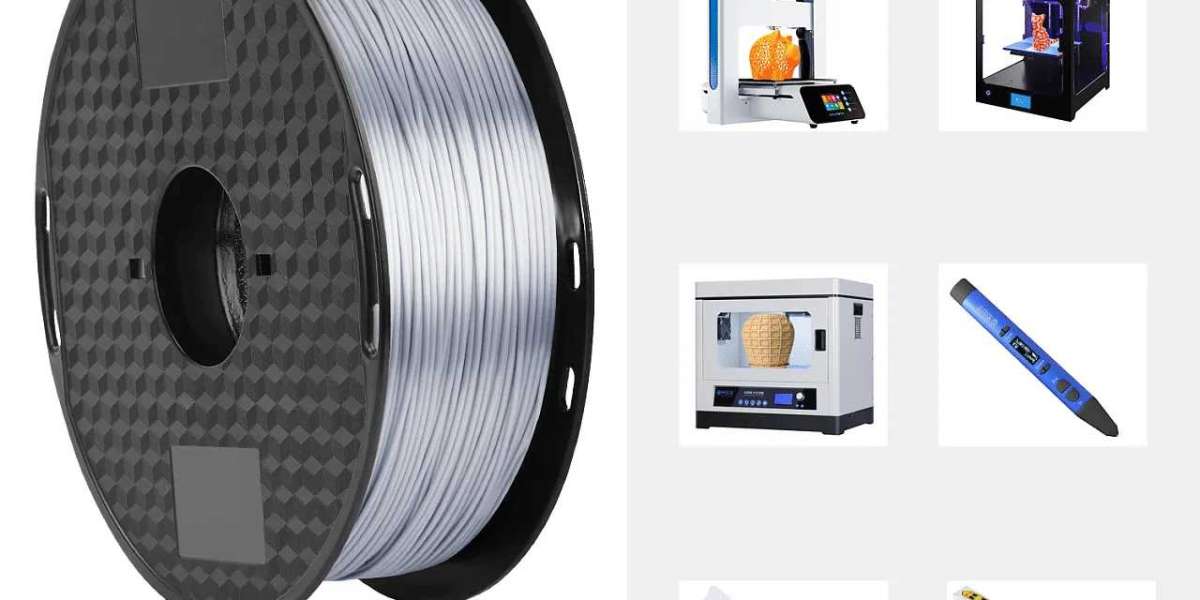With the rapid development of 3D printing technology, the choice of 3D printing materials has become the focus of user attention. As a 3D printing material with the advantages of both ABS and PLA, PETG filament has been favored by more and more users because of its unique characteristics and wide applicability. So, under what circumstances is it more appropriate to choose PETG filament? In this paper, material characteristics, application scenarios and printing requirements will be discussed in detail.
PETG filament has excellent physical and chemical properties, making it an ideal choice for specific situations.
PETG is a transparent, non-crystalline plastic with a light transmittivity of up to 90%, which makes it excellent in applications that require clarity and gloss, such as clear plastic panels, cosmetic containers, etc. PETG has good thermal stability, no odor when printing, small shrinkage rate, and is not easy to warping, which makes it more stable in the printing process and reduces the risk of printing failure. In addition, PETG also has good toughness and high impact strength, which is suitable for parts that require some mechanical strength.
PETG filament performs well in multiple application areas, making it the material of choice for 3D printing in these areas.
In the field of home appliances, PETG's high temperature and chemical resistance make it suitable for manufacturing components such as fan blades, electrical housings, etc. In the field of food containers, PETG's safety and weather resistance make it an ideal material for the manufacture of tableware and food packaging. In the field of toys and stationery, PETG's rich colors and high toughness meet the needs of children's products for safety and durability. In the field of electrical and electronic products, PETG's antistatic and insulating properties make it suitable for the manufacture of electronic component housings and connectors. In addition, PETG has certain applications in the healthcare sector, such as manufacturing medical devices and models.
PETG filament has certain advantages in terms of printing requirements, making it more suitable than PLA or ABS in some cases.
PETG has a wide print temperature range, usually between 230 and 250 ° C, which makes it more flexible in terms of temperature control. PETG has relatively low requirements for hot bed temperature and can be printed at 80~90 ° C or even without heating, reducing energy consumption and equipment requirements. PETG has good fluidity and a wide processing range, making it excellent in the printing of complex structures. However, PETG printing requires attention to platform adhesion and plug problems, and requires appropriate hot bed treatment and leveling distance control to ensure print quality.
While PETG filament performs well in many ways, there are also cost and post-processing factors to consider when choosing.
PETG material is generally more expensive than PLA filament, but it is also more robust and durable. Therefore, when the budget allows, if you need a long-life, wear-resistant print, PETG is a good choice. The post-processing of PETG is relatively complex and requires more skill and time for grinding and polishing due to its stickiness. Therefore, when choosing PETG, you need to weigh its advantages against the complexity of post-processing.
In summary, suitable situations for selecting PETG filament for 3D printing include: applications requiring high transparency, gloss and aesthetics; Components requiring good mechanical strength, high temperature and chemical resistance; And the printing temperature and equipment requirements are relatively low scenarios. However, when choosing PETG, you also need to consider cost and post-processing factors to ensure a balance between the final print effect and economy. Through reasonable selection and application, PETG filament can play its unique advantages in 3D printing to meet the needs of diverse applications.






